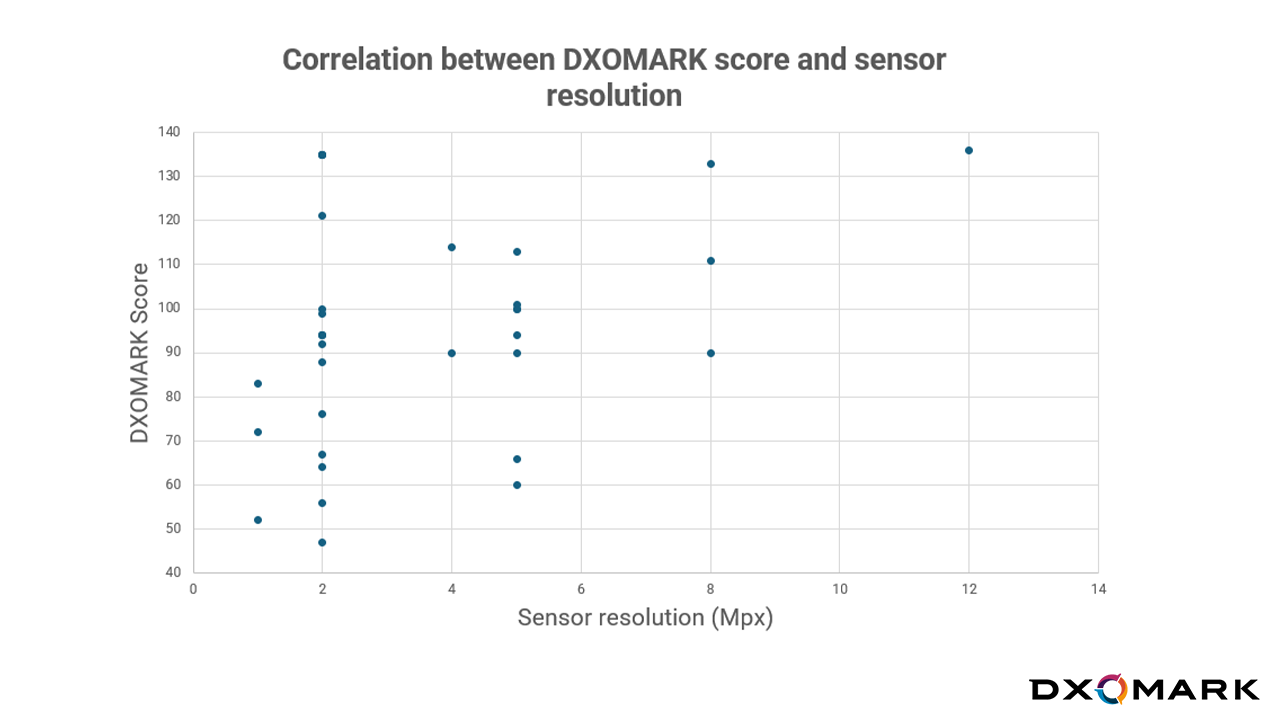Since launching our laptop testing protocol in 2023, DXOMARK has evaluated over 30 devices, uncovering critical insights into what makes a great integrated webcam. Two years ago, Apple’s MacBooks dominated with no real competition, but today, the landscape is shifting. Here’s what our data reveals about the state of laptop webcams, from hardware design to software optimization.
Apple’s Historical Lead, and the New Challengers
When we published our first laptop webcam rankings in 2023, Apple’s MacBook Pro M2 led the pack with an impressive score of 135, showcasing its dominance in image quality. At the time, the best Windows devices lagged behind, both the Lenovo ThinkPad X1 Carbon Gen 11 and Microsoft Surface Pro 9 (Highest scoring Windows devices) scored a modest 100, highlighting a significant gap in webcam performance. The quality of most Windows PCs we tested, including some flagship models, was disappointing, with the majority delivering an underwhelming video experience
For example, in our early tests, a MacBook Pro with the M2 chip excelled in challenging scenarios, such as a scene with a brightly lit window behind the user, delivering vibrant colors and stable exposure without fluctuations, a performance that Windows laptops struggled to match at the time.
Over the past two years, Windows devices have made remarkable progress in webcam quality, driven by concerted efforts from manufacturers like HP, Dell, Lenovo, and Microsoft. These companies have invested heavily in running hardware and software optimizations, steadily closing the gap with Apple. Meanwhile, Apple’s webcam quality has remained relatively stagnant, with only marginal improvements since 2023.
Windows devices have since made significant strides, catching up through thorough hardware and software optimization. With mobile giant Qualcomm entering this market with extensive ISP experience, this trend has been further accelerated. The Microsoft Surface Laptop 13-inch (Snapdragon-based), for instance, now handles HDR scenarios with clarity, maintaining detail in both bright backgrounds and dim foregrounds, rivaling the MacBook’s output.
The new Microsoft Surface laptop 13-inch provides a similar quality than the latest Macbook Pro 14” (M4,2024) M4. Face exposure and skin tones are pretty well balanced for every type of classic video conference use cases (as illustrated by the first comparison). For more complex use case such as strong backlit scene (single or duo like the second comparison), both devices still struggle to provide the right face exposure on deep skin tone while keeping a good contrast and bright preservation.
Some other devices like the Lenovo X9 are now providing great results even if we are still noticing some drawbacks such as illustrated on the frame above. Face exposure and overall color rendering have been improved with respect to previous devices. Still, skin color and contrast are not yet at the same level than the one we evaluated on the latest Macbook.
As a result, the performance gap has narrowed significantly. Here’s a simple table showing how these devices scored in our tests (higher scores indicate better performances):
This near parity indicates that Apple’s lead in webcam quality is no longer unchallenged, as Windows OEMs are making significant investments in imaging technology. Analyzing the progression of scores across both categories, it’s clear that Windows laptops are steadily closing the gap with their Apple counterparts.
What explains this shift?
Sensor Resolution Matter Less Than You Think
Conventional wisdom suggests that higher sensors resolution means better image quality. Our data challenges that assumption:
While higher-resolution sensors generally correlate with improved detail scores, the relationship is relatively weak—some 2MP webcams outperform 8MP counterparts.
This is largely due to the heavy compression (1080p) imposed by the hardware video pipeline, which diminishes the potential advantages of larger or higher-resolution sensors.
Notably, smaller sensors can still deliver excellent results when paired with effective image signal processing (ISP) and tuning. For example, the Microsoft Surface Laptop 13-inch achieved a detail score of 135 using a modest sensor, thanks to Snapdragon’s advanced ISP and AI optimization, closely rivaling the Apple MacBook Pro M4’s 8MP sensor, which scored 136.
Conversely, even high-resolution hardware can underperform—devices equipped with 4K sensors have scored below 100 when tuning was subpar, highlighting the critical role of software optimization in image quality.
As seen in this graph, although there is some correlation between hardware and score, plenty of 2Mpx sensor outperform higher 4+Mpx sensors when it comes to overall image quality.
On this video capture, we’re comparing the Microsoft Surface Laptop 13-inch equipped with a 2MP Camera to a HP Dragonfly Pro Chromebook equipped with a 8MP camera.
With 1000lux and a dynamic of 4 EV between face and bright box, we can easily observe a strong gap of quality in terms of exposure, contrast and dynamic range capabilities. Texture is also very low on the HP Dragonfly Pro capture.
Therefore, a key finding of our extensive range of data is that ISP performance and software tuning have a greater impact on image quality than sensor specifications alone
MIPI vs. USB: Why Connection Matters
Our testing reveals a clear performance hierarchy among webcam interfaces, with the Mobile Industry Processor Interface (MIPI) consistently enabling superior image quality in laptop cameras. The table below outlines the key advantages associated with MIPI-based implementations:
| Performance Factor | MIPI Advantage |
|---|---|
| Image Processing | Direct ISP pipeline in the Applications processor (not a 3rd party USB camera chip) with joint OEM/SOC tuning for optimized image quality. |
| Data Throughput | 2-4x higher bandwidth, enabling seamless high-resolution data transfer. |
| Power Efficiency | Built on newer tech nodes, MIPI offers superior efficiency for always-on AI tasks. |
| AI-Friendliness | Bayer processing retains richer image data compared to USB’s YUV-centric approach, enhancing AI-driven features. |
| Resolution Support | Superior image quality at 5MP and above, where USB struggles to keep up. |
The graph below presents a comparison of our scores between the best-performing USB webcam and a MIPI-based solution, highlighting the quality gap between the two interfaces.
The advantages of MIPI interfaces are clearly reflected in our evaluation results. All 15 top-performing webcams in our testing utilize MIPI connections, consistently achieving higher scores than their USB counterparts.
Mobile Industry Expertise
MIPI sensors benefit from advancements in mobile imaging, allowing devices to achieve remarkable camera quality. OEMs using ARM chipsets—such as Apple and Qualcomm—lead the pack, with the MacBook Pro M4 scoring 136 and the Surface Laptop 13-inch close behind at 135, thanks to years of smartphone camera tuning expertise now applied to laptops. This technical advantage manifests in various attributes depending on products.
Overall we did not measure devices with USB connections that managed to provide in the same camera:
- Exposure: good target, dynamic range and temporal stability
- Color: accurate color and white balance and good skin tone rendering.
- Texture: overall, the level of detail is systematically lower than the MIPI competition
Implementation Quality Matters
While USB-connected webcams typically face performance constraints—often dependent on the image quality capabilities of module manufacturers—strong tuning can still deliver competitive outcomes. For example, the MSI Prestige 16 AI Evo achieved a score of 92, outperforming some earlier MIPI implementations.
Future Outlook
USB connectivity remains prevalent in low- to mid-range devices. However, MIPI is rapidly establishing itself as the standard for high-end laptops, supported by a mature ecosystem and superior integration capabilities. For applications requiring premium image quality, MIPI provides a clear and compelling advantage.
Conclusion: Software and MIPI Redefine Quality
After two years of rigorous testing, three key insights have emerged:
- First, Apple’s dominance in webcam performance is no longer unchallenged, with Windows OEMs rapidly closing the gap.
- Second, hardware alone is insufficient, successful webcam performance hinges on the integration of advanced software and ISP partnerships.
- Lastly, MIPI has established itself as the standard for delivering premium performance, particularly in high-end devices.
For businesses, this signifies that webcam quality is no longer a Mac-exclusive advantage. Leaders in this space will be those who combine cutting-edge hardware with strong imaging expertise, regardless of whether their platform is based on x86 or ARM architecture.
















